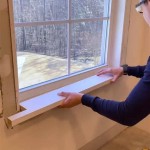Cost To Paint Interior Walls, Ceiling, and Trim: The Essential Factors
Repainting your home's interior can significantly transform its ambiance and enhance its aesthetic appeal. However, it's crucial to understand the various factors that influence the cost of painting interior walls, ceilings, and trim, to ensure accurate budgeting and prevent unexpected expenses.
1. Size of the Area
The most significant factor affecting the cost of painting is the size of the area to be painted. Larger rooms and ceilings require more paint and labor, thus increasing the overall cost.
2. Number of Rooms
The number of rooms to be painted directly correlates to the cost. More rooms involve more surfaces to cover, resulting in higher paint and labor costs.
3. Surface Preparation
The condition of the surfaces to be painted plays a crucial role. If extensive surface preparation, such as patching, sanding, or priming, is required, the cost will increase.
4. Paint Quality
The quality of paint used can significantly impact the cost. Higher-quality paints typically offer better coverage and durability, but they come with a higher price tag compared to lower-quality paints.
5. Labor Costs
The cost of labor varies depending on the region, the contractor's experience, and the complexity of the job. Professional painters typically charge an hourly rate or a flat fee based on the size of the project.
6. Trim Work
Painting trim, such as baseboards, crown molding, and window frames, requires precision and attention to detail. The intricate nature of trim work often leads to higher labor costs compared to painting flat surfaces.
7. Ceiling Height
Higher ceilings require additional equipment, such as scaffolding or ladders, and more labor time to reach and paint the entire surface. This can result in higher overall costs.
8. Accessibility
If furniture needs to be moved or protected during the painting process, it can increase the labor time and, consequently, the cost.
9. Additional Services
Some painting contractors offer additional services, such as color consultation, wall repair, or wallpaper removal. These services typically come with additional charges.
Tips for Saving Money on Painting Costs
Consider the following tips to save money on paint and labor costs:
- Choose a low-VOC or zero-VOC paint to reduce ventilation costs.
- Consider painting during off-season or weekdays for lower labor rates.
- Negotiate with contractors for discounts or bundled pricing.
- Do some of the prep work yourself, such as cleaning and patching small holes.
Conclusion
Understanding the essential factors that influence the cost of painting interior walls, ceilings, and trim is essential for accurate budgeting and making informed decisions. By considering the size of the area, surface preparation, and additional services, you can estimate the potential expenses and plan accordingly. Remember, while a fresh coat of paint can enhance your home's aesthetics, it's equally important to ensure a cost-effective approach.

Cost To Paint A Room Average Fixr

2024 Interior Painting Costs Average Cost To Paint Of House

2024 Interior Painting Costs Average Cost To Paint Of House

Cost To Paint A Room Average Fixr

2024 Cost To Paint Trim Baseboards Interior Exterior

2024 Cost To Paint Trim Baseboards Interior Exterior

How Much Does It Cost To Paint Trim

Cost To Paint Interior Of House Kind Home Solutions

How Much Does Interior House Painting Cost A New Leaf

How Much Does It Cost To Paint The Interior Of A House In Paintrite Pros
Related Posts








